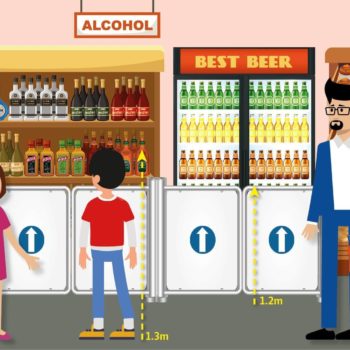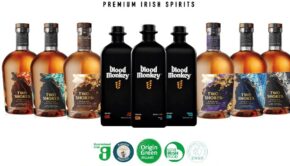Dilution of the Public Health (Alcohol) Bill leaves children exposed to alcohol advertising and product placement

Staying committed to responsible alcohol retail, NOffLA urges the government to take more progressive action toward reducing the visibility of alcohol to children by means of bill amendments and barrier extensions.
16 July 2018
As an organisation committed to the responsible retail of alcohol, the National Off-Licence Association (NOffLA) is calling on the government to reduce the visibility of alcohol to children, by amending Section 22.i of the Public Health (Alcohol) Bill and increasing the height of the waist-high barrier, which separates alcohol from other products in a mixed retail outlet.
At Report Stage in the Seanad, following extensive debate and consultation with selected retail groups, including mixed retailers and supermarkets, a newly introduced option (Section 22.i) of a waist-high physical barrier, at 1.2m in height, was brought forward by Fianna Fáil and accepted by government.
This means that a waist-high barrier is all that will separate alcohol from other products in a large mixed-retail/supermarket, hardly the structural separation that was originally envisaged when the bill was introduced in 2015 (as per NOffLA’s sketch). In fact, NOffLA believes that such was the extent of dilution, that the government was forced to rename Section 22 from ‘Structural Separation’ to ‘Separation and Visibility of Alcohol Products and Advertisements for Alcohol Products in Specified Licensed Premises’.
Worryingly, according to UK statistics, 1.2m equates only to the average height of a seven-year-old boy*. NOffLA questions the rationale and merits of the 1.2m barrier; whether it is evidence-based and supported by scientific best-practice; and what possible impact this will have on the de-normalising of alcohol, if an eight-year old, or nine-year old, not to mention 15 or 16-year old, remains exposed to alcohol? It’s worth noting that children under 18 are not permitted to be in an off-licence unless they are accompanied by a parent or guardian.
NOffLA welcomed recent comments by Minister for Health Simon Harris in the Dáil that the ultimate goal of Section 22 is to make alcohol less visible, yet is now confused as to how government can reconcile this claim with the amendments which it has accepted regarding Section 22.
Evelyn Jones, government affairs director of NOffLA, believes that a waist-high barrier will solely benefit the supermarket chains. “The amendment was apparently brought forward in response to claims from small retailers that the cost of compliance with the original proposals would be too high,” she said. “We understand the need for compromise and industry consultation in legislative drafting, in fact we welcome it. However, this amendment is designed solely to the benefit of large international supermarket chains, and cuts against the Minister’s comments that the ultimate aim of the bill is to reduce the visibility of alcohol.”
NOffLA does not have any objections to the remainder of clauses under Section 22, which were added for the benefit of genuine SMEs and small retailers, rather than large multinational supermarkets.
It is NOffLA’s belief that if the above amendment is to have any real impact at all, the minimum height of the physical barrier must be increased to at least 1.8m, the average height of a 17/18-year-old*.
“To have come this far, and prevailed against such strong opposition throughout the process, only to succumb at this late stage is extremely disappointing,” Jones added. “We understand that compromise is necessary in politics, but when you are on the right side of implementing real and necessary reform, something that will change forever our relationship with alcohol for the better, we would ask the Minister to remain steadfast in his objective, and be true to the bill’s original principles by increasing the height to 1.8m.”
*(Source: www.onaverage.co.uk/body-averages/average-child-height)



 Print
Print






Fans 0
Followers